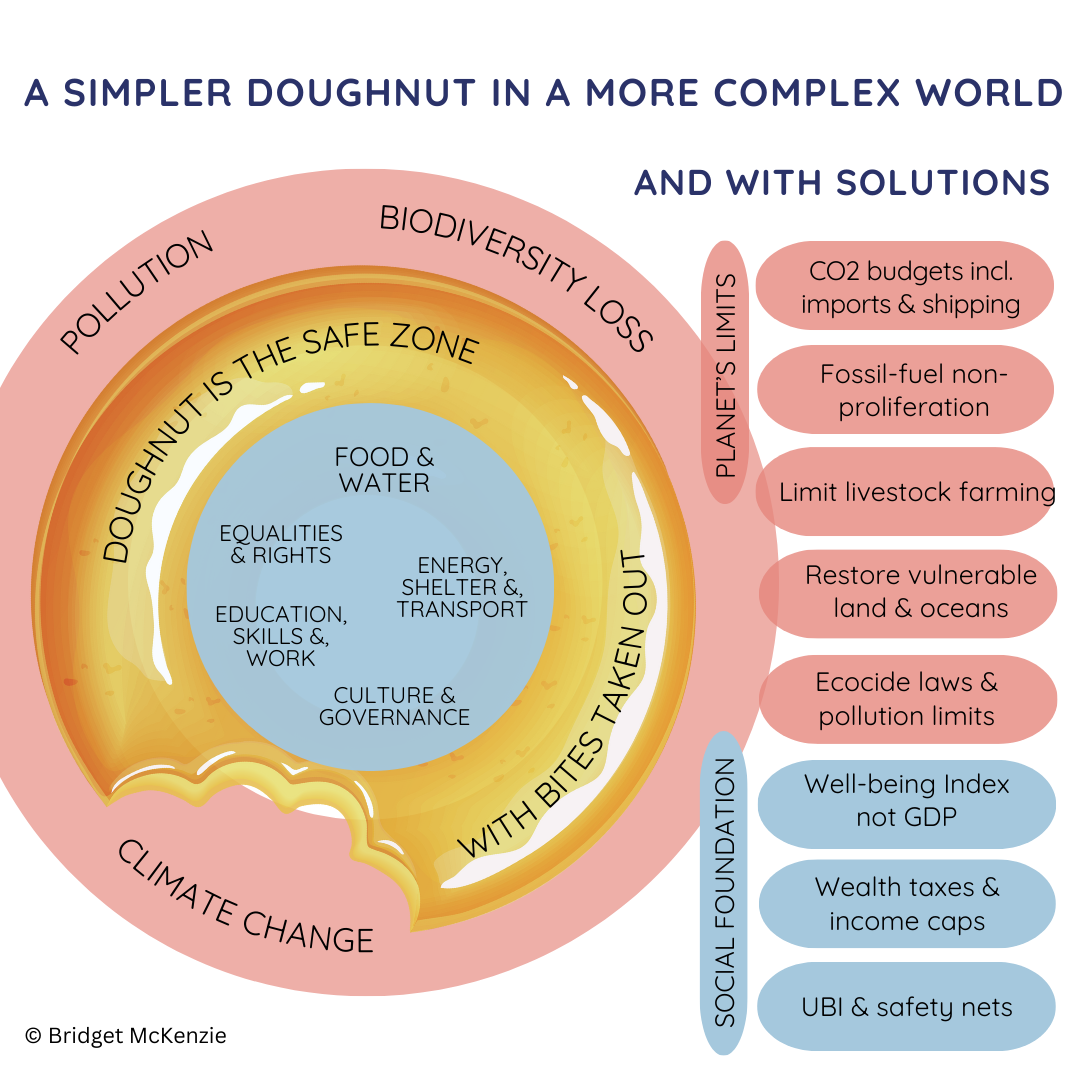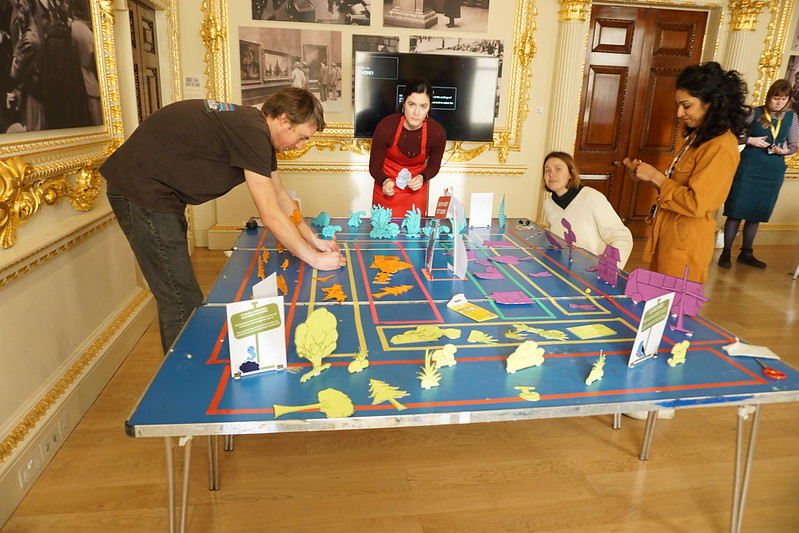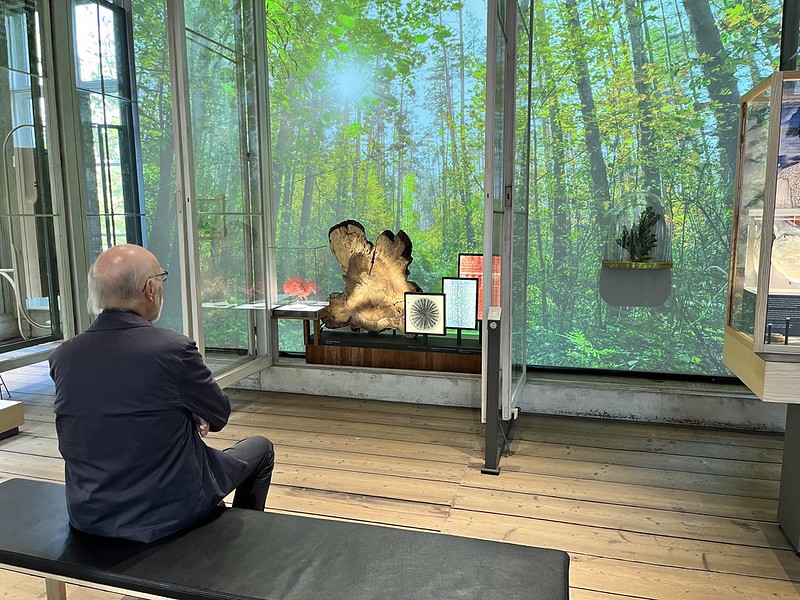
Having moved back home to the City of Norwich, I now feel I am working in a ‘place’, as it’s not easy to define or target places in a great metropolis like London. However, in the local action groups I’m part of in Norwich, my lens for levers for change tends to be more national and global than some other participants. Do I tend to look wider because I’m in the Cultural sector? Isn’t Culture about the individual and not so much the bigger picture? This is an attempt to muse on these questions, particularly about the role of Culture in place-based systemic change.
A preamble to address three concerns…
One: when reviewing the role of Culture, always look inclusively at Cultural practices, not just the standard categories of the Arts. All have contributions to make, combining in collaborative and interdisciplinary ways, bringing together people from different walks of life. Generalising accounts about ‘culture for change’ often overlook forms of Culture such as Crafts, Design, Architecture, Fashion, Digital technology, Film & Broadcasting, Marketing/Advertising, Museums and Heritage, Science Communication, Creative Education, Participatory & Socially-engaged Arts, Art Therapy, and — perhaps most important – vernacular or indigenous symbolic practices. These can be overlooked because the finer Arts, that is, cultural forms that are less applied or less traditional, do genuinely require celebrating and defending. They tend towards enchantment and novel metaphor so are tricky to quantify and justify as worthwhile fundable interventions. I suggest that the Arts can have more potency as part of a well-supported Cultural ecosystem of all the other practices, especially in places.
Two: Culture is often omitted from frameworks to create social, economic or environmental change (such as the Doughnut). Maybe it’s seen as too broad and indefinable. Sometimes its bigness is squeezed into boxes of ‘keeping people happy’ or ‘attracting tourists’. There are so many reasons to keep Culture in mind for place-based change, and a key one is to be sensitive to identity politics and racism in a context of shifting populations (increasingly due to environmentally-related conflict and degradation). Culture — particularly Heritage — can be weaponised to increase exclusion and intolerance, even through very subtle messaging about belonging, origins or local traditions, which might have benign intentions to engage ordinary people. At this time, the opposite is essential, that we should employ Culture to enable much greater compassion and connection beyond our small worlds.
Three: definitions of ‘local’ need to be opened up.
Maybe it’s because I’m a Londoner…or have been one for 30 years, that I see places as wide open and interconnected. I propose these three approaches to opening up a sense of place:
a) In defining who belongs, welcome anyone who has lived elsewhere or is here temporarily, and include more-than-human inhabitants.
b) In defining any boundaries, focus on the biological and geological realities of a place (including its inhabitants), more than the territorial naming and ownership of a place.
c) In defining its essence, recognise the interdependence of localities with other localities, such that pollution & ecocide in one place harms all other places, and that our supplies of food and goods depend on the well-being of other places. No place has a single contained essence in an Earth crisis.
This ‘opening up’ of thinking about place & inhabitants is a key role for the Cultural sector.
Moving on, I’m thinking about the way that Culture can shape and shift mindsets for change. There is a small range of dominant and emerging mindsets about what systemic changes are ethical and viable in places. These are cultivated through media, education, business practices and Cultural narratives. Mindsets govern what is noticed and what is ignored, and they form motivational bonds in social groups.
The more dominant mindsets are:
- Conservative and Incremental: evidenced by minor efforts to reduce CO2 emissions within a Business as Usual setting. The ‘environment’ is seen as topic of debate rather than a living world, and as a tiresome duty alongside more important and unconnected priorities. Non-systemic choices are made all the time and harm outweighs the good. Their take on growth: Capitalist growth is the key goal.
- Progressive and Collaborative: evidenced by partnerships between civic & commercial organisations and local councils to achieve sustainable and thrivable goals. Local priorities of employment, crime, housing, health, high streets and transport are seen as routes to achieve environmental benefits. There might be an emphasis on nature connection for people and the viable uses of built & natural heritage. Non-systemic choices are still a risk as progressives will be pushing against conservative & incremental mindsets. For example, Cambridge council decided to fell trees for a bus route to achieve its CO2 reduction goals. Their take on growth: Green Growth.
More emerging mindsets:
- Localising and Transitioning: evidenced by prefigurative and experimental projects in a place to increase local, resilient, cooperative and ethical supplies of food, energy, work and goods. Experiments operate realistically within contexts that prioritise meeting people’s needs (while hoping not to harm the environment). They might intersect with larger-scale or commercial efforts e.g. ‘regenerative’ farming and green energy. Their take on growth: Growth Agnostic.
- Collapse-aware Regenerating: evidenced by thinking of a place as bioregion and watershed before looking to intervene in urban systems. Prioritising social protection and ecological restoration in the face of climate impacts over goals such as social mobility. Looking at levers across different scales from macro-scale levers (e.g. laws for land access & to stop ecocide) to micro-scale (e.g. well-nourished people or wildlife corridors in gardens). Their take on growth: Degrowth, in the context of breached planetary boundaries.
What are the roles of Cultural players (practitioners, networks and organisations) where these different mindsets are engaged? Their roles will be different depending on the applied strength of the mindsets, and the essential geophysical nature, of any particular place.
- For Conservative & Incremental places, Cultural players might advocate for needs of vulnerable people & species, hold space for local activists, promote visions of more progressive change, and use Heritage or Commercial creativity as a way-in to soften & widen conservative mindsets. (See the Museum of Homelessness or Museum of Neoliberalism, or Creatives for Climate.)
- For Progressive & Collaborative places, Cultural players might promote these partnership efforts, help community consultation & volunteering, offer convening spaces and resources, act as a bridge between government, civic groups & neighbourhoods. (See Manchester’s GMAST, the Festival of Thrift in the Tees Valley, or Scarborough Museum & Art Gallery’s Space to Be.)
- For Localising & Transitioning places, Cultural players might be catalysts or role-models for ecological innovation such as diversity-led green enterprise or food waste cafes, or use Heritage for awareness & revival of local materials, foods & crafts. (See Atmos Totnes project, Centre for Alternative Technology, Happy Museums project, or the Imaginarium in Cambridge.)
- For Collapse-aware & Regenerating places, Cultural players might offer: therapeutic services for people’s wellbeing & Nature Positivity in face of Climate Distress; design public art as forests or flood defences; integrate art with food growing or mapping of changing geographies; develop young people to be effective when normal employment is not available. (See Ackroyd & Harvey’s planting project Beuys’ Acorns or The Centre for the Study of the Force Majeure)
Realistically, many places — especially larger ones — are less definable and will have groups working across different mindsets. The collapse-aware regenerating mindset is only really found in places in some regenerative estates, intentional communities and indigenous-led territories. The role of Culture in the most typical mixed places (in the Global North) will be to do with discovery and definition, where creative organisations collaborate to explore possibilities for place-based change. This includes stretching what people consider to be possible — with more Possitopian thinking. When considering Physics, although planetary boundaries have been breached, we do have physical solutions (e.g. see Project Drawdown). When considering Politics, although the polluters & wealthy have captured democracies, there is still much scope for massive citizen engagement in politics for good (e.g. see the Climate Majority Project).

Systemic Change is dependent on multiple scales and levers. Regenerative design for system change is about nestedness (e.g. microorganisms within humans as bioregion inhabitants within planetary systems). Human systems such as economics and Culture only operate within geophysical realities, the operating limits of which have been breached. This broken and troubled state of the planet means targeting the most well-evidenced levers for large-scale change. These include: Universal Basic Income; wealth taxes & income caps; flexible 4 day weeks; tough pollution & ecocide laws; a de-escalation of fossil fuel extraction and livestock farming (replacing with renewables & agroforestry etc.); CO2 budgets accounting for externalities such as shipping & imports; and investment & employment in restoration or rewilding of land and oceans. Where the powers-that-be in local places lack the agency to tackle these levers, they need to advocate upwards for them, to create Cultural narratives to promote them, and encourage lifestyle changes and volunteering where that will make a difference.
The implications of our current situation and technology-driven mindset are that governments & corporations are creating separate conditions for human life and for biodiverse life. In the longer-term (although already a reality in places such as Kuwait) place-based efforts will be driven to enable humans & favoured animals to survive extreme heat & storms inside built systems providing imported water & controlled air, abandoning wildlife to Thermogeddon. In the shorter term most urban settlements depend on global imports of food, energy & manufactured goods. But these supplies depend upon basics such as freshwater, breathable air and liveable temperatures and ecosystems being able to thrive elsewhere so that other non-local essentials can be imported. Increasingly though, local basics are stressed or polluted and ‘elsewhere’ is stressed by climate impacts, pollution, biodiversity loss, resource conflict and racist territorialism, combined with awareness of the need to mitigate negative externalities of products. Both these harmful and remediating factors mean increasing costs and imminent limitations of supply.
So, place-based system change should properly be about resilient and equitable provision of the means to thrive for humans & other-than-humans not only within the operating limits of the planet, but in recognition that these limits are breached. This recognition means that aid and protection in the face of impacts, and the urgent and large-scale regeneration of ecosystems, are the absolute priorities if achieving the equitable needs of all people into the longer-term future is the goal. There can be no truly effective locally-applied systemic interventions that are not designed in a nested way to effect ecological restorative change at micro (e.g. individual values & actions) and macro (e.g. political, legal, international) levels.
In conclusion, Cultural players have key roles in:
- helping to envision the nestedness of systems
- showing how change has happened in the past to imagine how it might happen in future
- to see from other mindsets and to collaborate with those with different views
- helping place-based partners to discover what change is needed and consult with a wider range of communities
- to widen definitions of what is local
- to widen thinking about what is possible, for better and worse, and
- to create and build new structures and stories based on the most-evidenced levers for positive change
Postscript: some of my place-based activities in Norwich
Before moving in mid-2022 I took part in the Power of Place learning journey (led by Jenny Andersson, Really Regenerative). From this I learned that when planning regenerative interventions in a place you need to do a full analysis of the essence of a place. So I did that for Norwich.
I set up a programme called Possitopia Norwich under the umbrella of Climate Museum UK, and tried a few experiments, such as…
Walking in the Shoes, live-action roleplay walks
Imagine Futures project with two schools
Then I ran the Possitopia Festival in November 2023, supported by Norwich Eco Hub
I’ve started developing a project called Make Climate History that was piloted in Norwich Science Festival.
I’m involved in a few networks including: Norwich Writers Rebel; a group applying for Lottery funds for a major climate & energy learning programme; MP Watch for Norfolk; and also the ‘Norwich Unity Hub’ working with others towards a shared space of many social & environmentally-focused organisations. I’m also involved in a new Norwich Doughnut Action group, which has stimulated this post, and another on Economics Past Earth’s limits.
If you’re in Norfolk, you might want to come along to the Culture Declares East ‘Reimagine the City’ assembly on 5th May. This will feature Imagination Stations led by artists to reimagine how we eat, be well, work and learn in a future Norwich, inspired by the Doughnut.



